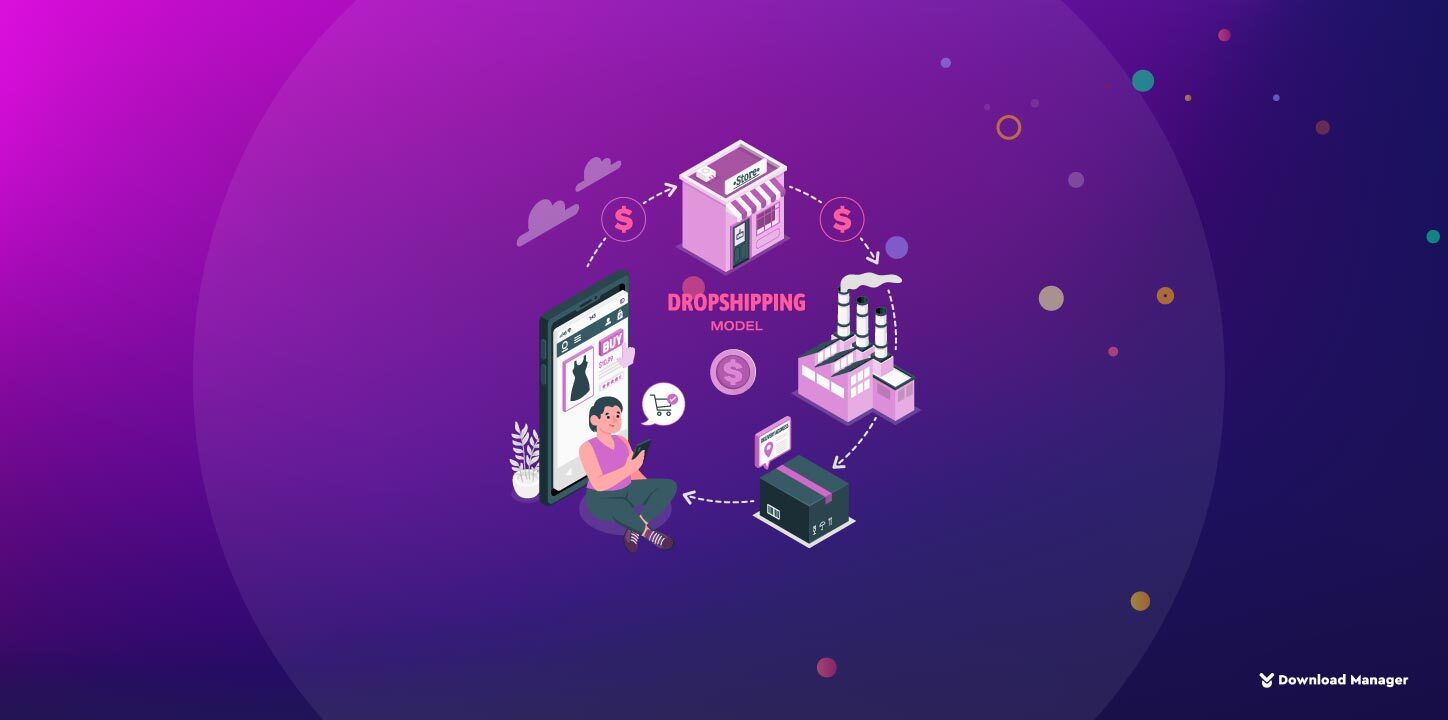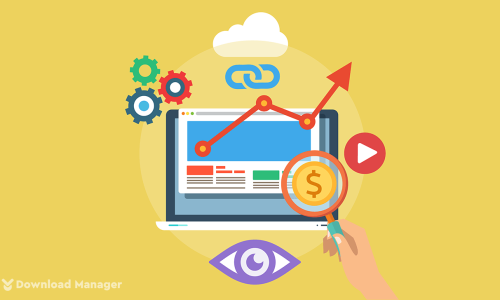
All You Need To Know About Dropshipping
In today’s dynamic and rapidly evolving world of commerce, traditional business models are continually being reshaped by innovative approaches. Among these, dropshipping has emerged as a game-changer, revolutionizing the way entrepreneurs and retailers operate in the online marketplace. This business model has attracted entrepreneurs and online retailers due to its low barrier to entry and potential for profitability. If you’re considering venturing into the world of online retail or simply curious about how dropshipping works, this article is your comprehensive guide to understanding the ins and outs of dropshipping.
What is Dropshipping?
Dropshipping is a modern retail fulfillment method that has gained immense popularity in the world of e-commerce. It simplifies e-commerce by transforming the traditional supply chain. Retailers don’t need to stock or handle inventory in this streamlined model. Instead, when a customer places an order for a product on the retailer’s online store, the retailer purchases the item directly from a third-party supplier or manufacturer, who then ships the product directly to the customer’s doorstep. This means dropshippers can focus on marketing, customer service, and expanding their product catalog without the overhead costs and complexities of inventory management. Additionally, it’s a low-risk, high-potential model that has democratized e-commerce, allowing entrepreneurs to enter the online retail space with minimal upfront investment.
How to get started with dropshipping
Dropshipping is a unique e-commerce fulfillment method that operates differently from traditional retail models. Understanding how dropshipping works involves breaking down the key steps involved:
Selecting Products and Suppliers:
The first step in dropshipping is choosing the products you want to sell in your online store. This often begins with niche selection, where you identify a target market and product category that aligns with your interests and market demand.
Afterward, you need to find and establish relationships with reliable suppliers who offer dropshipping services. These suppliers can be wholesalers, manufacturers, or other retailers. Common platforms to find such suppliers include AliExpress, SaleHoo, and Oberlo.
Setting Up Your Online Store:
To sell products through dropshipping, you’ll need an online store. Popular e-commerce platforms like Shopify, WooCommerce, and BigCommerce provide user-friendly tools to create and customize your store.
You’ll populate your online store with the products you’ve chosen from your selected suppliers. This typically involves importing product images, descriptions, and pricing information.
Pricing Your Products:
Determining how to price your products is essential for profitability. Factors to consider include the cost of the product from your supplier, shipping fees, your desired profit margin, and any additional costs such as transaction fees and marketing expenses.
Marketing Your Store:
Effective marketing is a cornerstone of dropshipping success. Utilize various digital marketing strategies to attract potential customers to your online store. This can include search engine optimization (SEO), social media marketing, email marketing, and paid advertising campaigns.
Customer Orders:
When a customer visits your online store and places an order for a product, you’ll receive the order details, including the customer’s shipping address and the specific product they’ve purchased.
Forwarding Orders to Suppliers:
The critical aspect of dropshipping is that you don’t keep inventory. Instead, as soon as you receive an order from a customer, you forward that order to the supplier who provides the product.
You’ll pay the supplier the wholesale price for the product, along with any applicable shipping fees.
Supplier Ships Directly to the Customer:
The supplier, upon receiving the order and payment from you, will handle the packaging and shipping of the product directly to the customer’s address. They often use discreet packaging without any branding associated with your store.
Order Tracking and Customer Service:
It’s crucial to keep track of the order’s status and provide excellent customer service. Keep customers informed about shipping times and address any inquiries or issues promptly.
Managing Returns and Refunds:
In the event of returns or refunds, you’ll need to coordinate with your supplier to facilitate the return process. Ensure that your store’s return policy is clear and aligns with your supplier’s policies.
Scaling Your Business:
As your dropshipping business grows, you can expand your product catalog, target new niches, and explore additional marketing channels. Scaling up often involves finding more reliable suppliers and optimizing your operations for efficiency.
Advantages of Dropshipping:
Dropshipping offers several advantages that make it an appealing business model for entrepreneurs and online retailers:
Lower Startup Costs:
One of the most compelling benefits of dropshipping is the minimal upfront investment required. Traditional retail businesses often demand substantial capital for inventory procurement, storage space, and operational expenses. In contrast, dropshippers can start with a relatively modest budget since they don’t need to purchase inventory or rent storage facilities.
Easy to Start:
Setting up a dropshipping business is relatively straightforward, especially with the availability of user-friendly e-commerce platforms like Shopify and WooCommerce. These platforms offer pre-designed templates, tools for product listing, and various integrations, allowing entrepreneurs to launch their online stores quickly.
No Inventory Management:
With dropshipping, the burden of inventory management is lifted from the retailer’s shoulders. You don’t need to worry about tracking stock levels, managing warehouses, or dealing with unsold products. The supplier takes care of these aspects, allowing you to focus on other critical aspects of your business.
Flexibility in Business Operations:
Dropshipping provides flexibility in terms of where and how you operate your business. Since it’s primarily an online endeavor, you can manage your dropshipping business from virtually anywhere with an internet connection. This freedom makes it an ideal option for those seeking location independence.
Wide Product Variety:
Dropshippers can offer a diverse range of products without the constraints of physical inventory. This adaptability enables you to test and pivot into different niches and markets quickly. You can respond to trends and customer preferences by adding or removing products from your store easily.
Scalability:
As your dropshipping business grows, you can scale it up effortlessly. Adding more products, expanding into new markets, and diversifying your marketing efforts are all achievable without the constraints typically associated with traditional retail. With effective planning and supplier management, you can scale your business to meet increased demand.
Reduced Risk:
Because you only purchase products from suppliers once you’ve made a sale, there’s minimal financial risk involved. You’re not tied to large quantities of inventory that might become obsolete or unsellable.
Test and Validate Products:
Dropshipping allows you to test and validate new product ideas with relatively low risk. You can gauge customer demand for various products before committing to large inventory purchases.
Access to Global Markets:
With dropshipping, you can easily reach customers around the world. You’re not limited to a specific geographical location, enabling you to tap into global markets and expand your customer base.
Focus on Marketing and Customer Service:
Since you don’t handle inventory, your primary focus is on marketing your products and providing exceptional customer service. This enables you to build a strong brand, cultivate customer loyalty, and differentiate yourself in a competitive market.
Hard Truths About Dropshipping:
While dropshipping can be an attractive e-commerce business model, it comes with several hard truths and challenges that aspiring entrepreneurs should be aware of:
Low-Profit Margins:
Dropshipping is known for its razor-thin profit margins. Due to intense competition, price sensitivity among customers, and the need to remain competitive, dropshippers often struggle to achieve high-profit margins. This can make it challenging to generate substantial income, especially in highly saturated niches.
Highly Competitive:
The dropshipping market is incredibly competitive. Many entrepreneurs and retailers are attracted to the low barrier to entry, leading to a crowded marketplace. Standing out from the competition requires innovative marketing strategies and unique value propositions.
No Control Over the Supply Chain:
In dropshipping, you have limited control over the supply chain. Your suppliers are responsible for inventory management, packaging, and shipping, which can result in inconsistencies in product quality, shipping times, and stock availability. Any issues on the supplier’s end can impact your reputation and customer satisfaction.
Legal Liability Issues:
Dropshippers can face legal liability issues related to product quality and safety. If a customer receives a defective or unsafe product and decides to take legal action, you may be held accountable, even if the fault lies with the supplier. It’s crucial to have clear agreements and a legal framework in place to address such situations.
Building a Brand is Challenging:
Establishing and nurturing a brand can be difficult in dropshipping. Since you’re selling products from various suppliers, creating a cohesive brand identity can be a significant challenge. Building trust and brand loyalty requires extra effort and creativity.
Limited Customizations:
Dropshipping products typically come as they are, with limited options for customization. If you want to offer personalized or branded products, you’ll face challenges in finding suitable suppliers and maintaining consistency in customization.
Challenging Customer Support:
Providing excellent customer support can be demanding in dropshipping. You’re the intermediary between customers and suppliers, which means you must effectively communicate and address customer inquiries, concerns, and issues. Managing customer expectations and resolving disputes can be time-consuming.
Shipping and Delivery Challenges:
Shipping times and reliability can be inconsistent, especially when dealing with international suppliers. Customers often expect quick and reliable delivery, and any delays or mishaps in the shipping process can lead to customer dissatisfaction and potential refunds.
Supplier Reliability:
Relying on third-party suppliers introduces the risk of supplier unreliability. Suppliers may change their terms, go out of business, or fail to maintain consistent product quality. It’s essential to have contingency plans and alternative suppliers in case of supplier-related issues.
Marketing Costs:
Effective marketing is crucial for attracting customers, but it can be costly. Paid advertising, search engine optimization (SEO), and other marketing strategies require investments, and it may take time to see a positive return on investment.
Is Dropshipping Right for You?
Determining whether dropshipping is the right choice for you depends on a variety of factors. Dropshipping can be a viable option if you’re seeking a low-risk, low-cost entry into the world of e-commerce and are prepared to tackle its challenges. It suits individuals who value flexibility in business operations, allowing you to manage your store from virtually anywhere with an internet connection. However, success in dropshipping requires effective marketing, top-notch customer service, and the ability to stand out in a highly competitive market. If you’re willing to invest time in research, supplier selection, and brand-building while being prepared to navigate low-profit margins and the absence of control over the supply chain, dropshipping could be a rewarding venture. In conclusion, whether dropshipping is right for you depends on your entrepreneurial mindset, dedication, and adaptability to the realities of this unique e-commerce model.
Conclusion:
In summary, dropshipping is a viable business model for those looking to enter the world of e-commerce with minimal financial risk. It offers a pathway to entrepreneurship with its affordability, simplicity, and scalability. While it has advantages, it’s essential to recognize that it also comes with its set of challenges, such as intense competition and supplier management. However, by understanding the fundamentals and being prepared for the challenges, you can build a profitable dropshipping business in the ever-expanding world of online retail.
To get more valuable articles, check our Blog page. You can also follow our Facebook page and subscribe to our YouTube channel for more tutorials related to WordPress.









